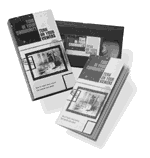Fall 1998
Tune In Your Community. Turn On Your Viewers.
The scene is powerful, unforgettable: A heart-broken mother tending the ruined shell of her
once bright and promising young son; the son’s futile effort to communicate, to move more
than his clear, blue eyes. It is the proverbial picture worth a thousand words about the
dangers of drug abuse.
This is what television does best – finding the picture that tells the story – and so it is
with no small measure of pride that WFAA-TV news director John Miller uses this image to
illustrate the Dallas station’s approach to civic journalism.

The civic journalism toolbox for television journalists comes with a 17-minute video and a “how-to” booklet.
WFAA-TV’s project on drug addiction and its continuing series of reports on family issues are
among the projects spotlighted in Tune In Your Community. Turn On Your Viewers, a new training
video from the Pew Center.
The center premiered the video with a viewing and panel discussion in September at the
RadioÃTelevision News Directors Association annual convention in San Antonio.
The video was inspired by the growing efforts of television stations around the country to
use civic journalism techniques in their news reports. It focuses, in particular, on evolving
efforts of five local TV news operations, from Maine to California, to connect with viewers
using the tools of civic journalism.
“For five years now, I have watched television news departments around the country advancing
some new forms of journalism to help them connect better to their communities,” said Jan Schaffer,
the Pew Center’s executive director.
“This journalism starts where citizens start on stories, empowers citizens to play a role,
gives journalists better listening posts – and has generated excellent feedback from viewers.
There has been much growth and much evolution in these efforts. This video helps to showcase
the kind of journalism that is emerging in hopes that it can foster even more ideas and
experimentation.”
In addition to WFAA, the video draws examples from:
media statewide to explore education, land use and other issues.
race relations in the Bay Area during a critical ratings period.
shootings around the country through a community dialogue on how children can learn respect and
avoid violence.
Tune in …Turn on should lay to rest the complaint that civic journalism is too difficult to
tackle on television. Each of these stations has strengthened its bond with viewers without
compromising the quality of its news shows and without jeopardizing its ratings.
The Pew Center asked the leaders of these newsrooms to share lists of practical tips for any TV
newsroom interested in establishing civic values. And the booklet that accompanies the video is
the result.
“Civic journalism can be a complex enterprise, but this booklet provides some simple do’s and
don’ts that can guide your efforts,” Schaffer said. It can serve as a step-by-step guide for
choosing stories, connecting with citizens, working with partners and building a civic newsroom
culture.
To order, call the Pew Center, 202-331-3200.
